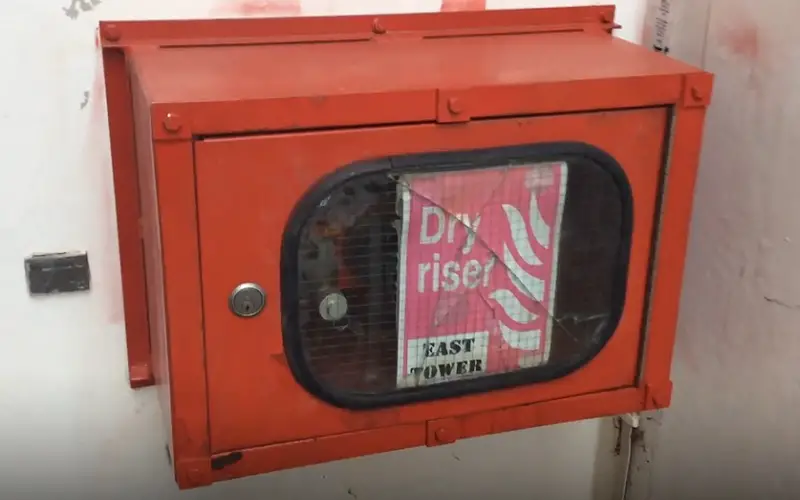A dry sprinkler system works by using pressurized air to hold back water until a fire activates the system. When a fire breaks out, the air releases, allowing the water to flow through the sprinkler pipes and extinguish the fire.
Dry sprinkler systems are commonly used in areas where freezing temperatures can occur to prevent water from freezing inside the pipes.
These systems are crucial for protecting buildings with sensitive equipment or stored goods that could be damaged by water leaks.
By understanding how dry sprinkler systems work, building owners can ensure their property is equipped with the right fire protection measures to minimize damage in case of emergencies.

Contents
How Does A Dry Sprinkler System Work?
Discover the functionality of a dry sprinkler system, where pressurized air keeps water at bay until activation.
When heat triggers a sprinkler head, the air releases, allowing water to flow, extinguishing the fire swiftly and effectively.
This innovative system protects against freezing temperatures in colder climates.
Principle Of Operation
Dry sprinkler systems are an essential component of fire protection systems in buildings. Unlike traditional wet sprinkler systems that are filled with water at all times, dry sprinkler systems store air under pressure in the pipes.
This innovative design prevents water from entering the pipes until a fire activates the system. So, how does a dry sprinkler system work?
Activation Process
The activation process of a dry sprinkler system involves several stages. First, the heat triggers a sprinkler head, causing it to open. As the sprinkler head opens, it releases the pressurized air inside the system.
Once the air pressure drops below a certain level, a dry valve located in the supply pipe opens, allowing water to enter the system and flow through the sprinkler heads.
This method ensures that only the sprinkler heads near the fire are activated, minimizing water damage to other areas of the building. The water then extinguishes the fire, suppressing its growth and preventing further damage.
Air Pressure And Water Flow
In a dry sprinkler system, air pressure plays a crucial role. The pressurized air, stored in the pipes, keeps the water supply separated until the system is activated.
This air pressure is maintained by using compressed air, either from a dedicated air compressor or from a remote compressed air source.
When the sprinkler head opens and releases the air pressure, the dry valve senses the pressure drop and opens to allow water flow.
The water enters the system through the main supply pipe and moves towards the open sprinkler head, ready to extinguish the fire upon contact.
Once the fire is extinguished and the air pressure is restored, the dry valve closes, sealing the system to prevent water leakage and maintaining the readiness for future incidents.
| Feature | Wet Sprinkler System | Dry Sprinkler System |
|---|---|---|
| Constant Water Supply | Yes | No |
| Prone to Freezing | Yes | No |
| Water Leakage Risk | No | Yes, if not properly drained |
| Water Damage Prevention | Partial | Highly effective |

Frequently Asked Questions On How Does A Dry Sprinkler System Work
What Activates A Dry Sprinkler System?
A dry sprinkler system activates when the air pressure drops, allowing the water to flow through the pipes and onto the fire.
How Does Water Get Into A Dry Sprinkler System?
Water enters a dry sprinkler system upon activation, releasing pressurized air from the pipe.
This sets off the dry pipe valve to open and water flows in, ready to extinguish a fire.
What Is The Disadvantage Of Dry Sprinkler System?
The disadvantage of a dry sprinkler system is delayed water discharge due to pressurized air in the pipes.
How Do Dry Fire Sprinkler Systems Work?
Dry fire sprinkler systems work by storing pressurized air or nitrogen in the piping network.
When a fire breaks out, a loss of air pressure triggers a valve to open, allowing water to flow into the system and eventually out of the sprinkler heads to extinguish the fire.
Conclusion
In essence, a dry sprinkler system operates without water until a fire activates it. By using pressurized air, it prevents water-filled pipes from freezing.
Understanding its functionality is crucial for ensuring fire safety in various settings. Explore how this system effectively safeguards against potential fire threats.

